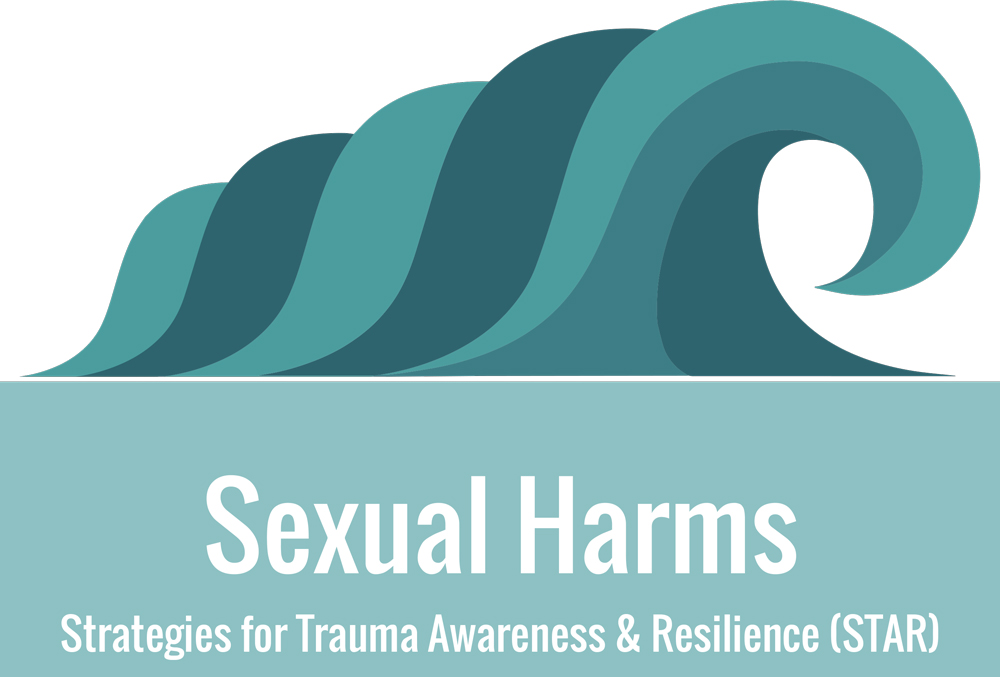We are excited to announce the creation of a STAR-based manual about trauma, resilience, and sexual harms. A team of authors worked diligently to construct training materials for those seeking to prevent and address sexual harms. STAR for Sexual Harms’ authors include researchers and practitioners: Carolyn Stauffer, Ram Bhagat, Rachel Roth Sawatzky, Rhoda Miller, and Joy Kreider.
Below is an excerpt from the manual that outlines the content and structure. You can download the manual and document containing important reflection questions for engaging the curriculum.
Chapter 1 focuses on understanding how trauma operates more generally and how sexual harms specifically impact us physically and socially. This is done by exploring the cascading effects of sexual harm on body, brain, beliefs, and behavior. Learning about these impacts helps explain what we may experience before, during, and after situations of sexual violence. Naming and understanding these dynamics help affected parties feel safer in their own bodies, as they navigate the way forward.
Chapter 2 discusses the importance of identity and power. Here we examine how privilege, power, positionality, and patriarchy shape social environments. We consider how various forms of structural violence may intersect and disproportionately impact on communities that are marginalized. We also probe the ways sexual violence becomes embedded within historical legacies of harm. Because sexual traumas involve dignity violations, this chapter situates sexual violence within a larger discussion of gender, equity, and just power relations.
Chapter 3 centers on the role of healthy relational attachments. The presence of strong and supportive relationships is key to sexual harms prevention as well as post-traumatic growth in the aftermath of sexual violence. Support networks are critical for the resilience of persons who have been harmed, and also play a vital accountability role for persons who have caused harms. Levels of risk, as well as possibilities for resilience, are all predicated on the presence of these networks. Sexual violence ruptures trust in relationships, and thus providing opportunity for recreating community is imperative.
Chapter 4 gives attention to the role that institutions can play in prevention, advocacy, and/or post-harm restoration. Here we examine the institutional dynamics of either betrayal or fidelity to the needs of harmed parties. We explore what organizational accountability and trauma-informed practices can look like and provide models that identify key policy considerations. We assess organizational protocols, evaluating their outcomes in relation to the harm or healing of all affected persons/communities.
Chapter 5 concludes with the challenge and promise of change. Our mandate in this chapter is to learn about community-based justice and massive resilience approaches. These approaches challenge traditional assumptions of state-sanctioned safety/corrections with the recognition that grassroots mobilizations are critical to addressing the need for broader structural and cultural transformation.
Page 8
Download STAR for Sexual Harms Manual
Guide for use of STAR for Sexual Harms Manual
STAR is currently seeking an organizational partner in implementing a pilot project with the materials. If you or your organization are interested, please review the reflection questions and ideal audiences and contact us at star@emu.edu.
